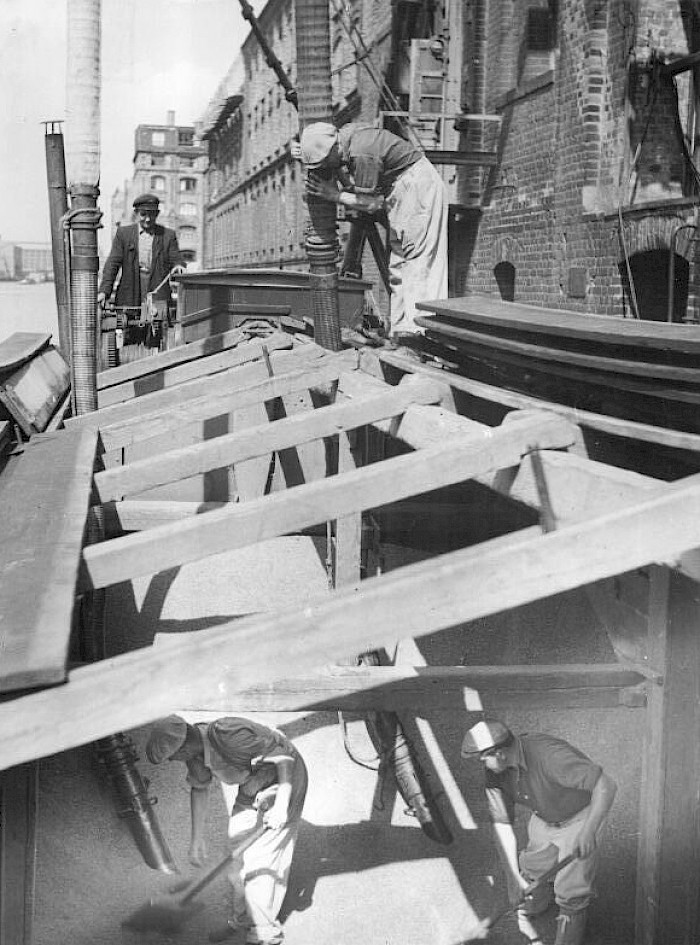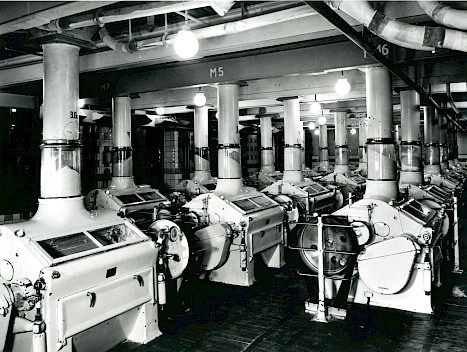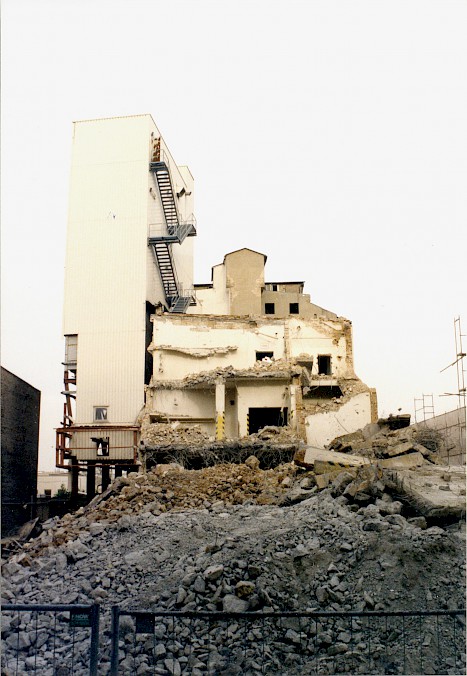Not destroyed in 1977
The Osthafen mill granary is the only original structure preserved on the Friedrichshain riverbank. All the other residential and industrial buildings that had stood on the banks of Mühlenstraße were destroyed in 1977, when the border was expanded there. The Osthafen mill and the granary were spared demolition because of their importance for the GDR’s flour production. The largest mill in the GDR continued to operate until 1995.
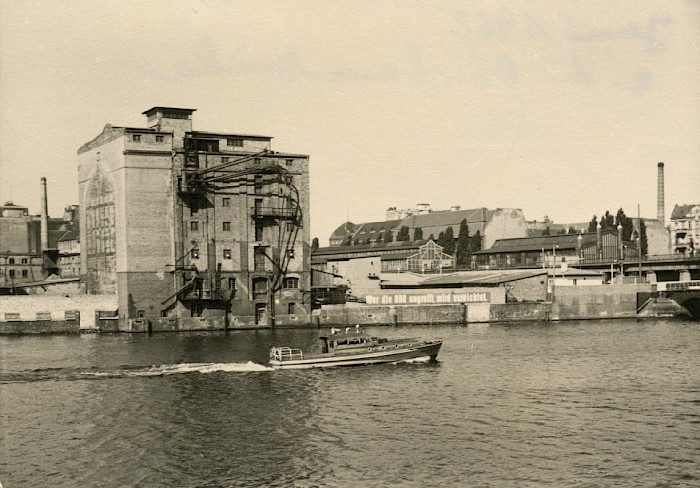
Establishing the Osthafen Mill
Karl Salomon bought the wheat mill at No. 8 Mühlenstrasse in 1893 and developed it into a flourishing business. He built a simple, modern-looking warehouse on the Spree River in 1878/80. It thus became the only mill in Berlin that could be accessed both from the water and the freight station in back.
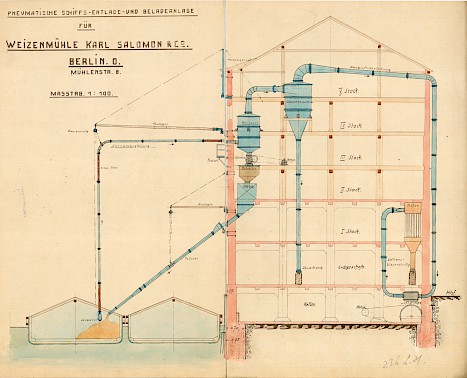
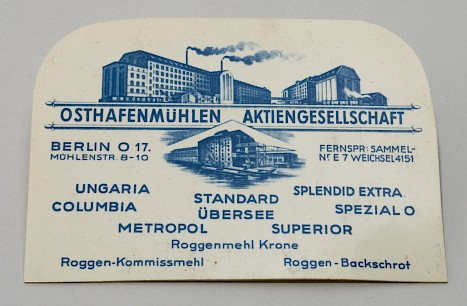
In 1921, after Karl Salomon's death, the mill was converted into a joint-stock company, with capital supplied by the heiresses and others. The business struggled financially in the second half of the 1920s and did not recover until 1930s. In 1932, the Rentenbank-Kreditanstalt and Deutsche Zentralgenossenschaftskasse invested 2 million Reichsmarks in the company. The name was subsequently changed to Osthafenmühle GmbH. With its takeover by the two credit institutions, the company was—more or less—in state hands. In 1932, representatives of the Deutsche Rentenbank Kreditanstalt, the Deutsche Bank and the Dresdner Bank joined the Deutsche Mühlenvereinigung and the Gesellschaft für Getreidehandel as members of the supervisory board. Evidently, the Salomon family, which had started the business, was no longer represented in the company.
The Osthafen Mill under National Socialism
The company continued to operate in the Nazi era, even after the war began. The grain was needed to supply food to the army and civilian population. The Osthafen Mill Company, therefore, was also involved in the exploitation of the occupied Soviet countries, especially Ukraine. Documents suggest that "as part of the economic reconstruction," the Osthafen Mill was active "as a deployment company in and around Nikolayev." A few of the company’s employees were also sent there. Thus, the Osthafen Mill was part of the infrastructure that extracted foodstuffs from the occupied Soviet Union to be distributed to the German occupation army and the German civilian population. German occupation policy deliberately caused starvation in the occupied territories, with the aim of killing millions of women, children, and men.
The Nazi’s plundering policy ensured that grain continued to be ground at the Osthafen Mill in Berlin. As the war progressed, however, the mill experienced a worker shortage. In 1940, the list of workers included ten Poles, who, as prisoners of war, were forced to work in the mill.
In April 1945, shortly before the end of the war, the Osthafen Mill was hit by a Soviet bomb. Following Berlin’s liberation from Nazi rule and Germany’s defeat, however, it quickly resumed operations and once again began supplying the Berlin population with wheat.
The Osthafen Mill in the GDR
The Osthafen Mill was nationalized in 1946. It was merged with other mills to create the VEB Osthafenmühlen in 1966. Three years later, it was consolidated with other grain production facilities resulting in the Kombinat Getreidewirtschaft Osthafenmühlen. The mill supplied all of East Berlin with its flour products. About 150 people worked at the Osthafen Mill until 1990. The entire grain sector combine had 500 employees at that time.
After the Berlin Wall fell and the monetary union with the Federal Republic of Germany was implemented, everything changed for the Osthafen Mill. The combine was split up on 1 July 1990 and the newly formed Osthafenmühle GmbH was forced to reduce its workers’ hours the following month. At first, the company management was optimistic that—with its lower wages—the mill would be able to compete with West German businesses. Although nearly two thirds of the workforce was laid off in 1991, this calculation proved wrong. In the mid-1990s, the Osthafen Mill was bought up by two competitors who promptly shut it down, an action that the Cartel Office later deemed a breach of competition rules; penalties’ ensued.
A Gatehouse in the Berlin Wall
A gatehouse, which was built into the Berlin Wall in 1977, forms an inconspicuous yet unique monument at the East Side Gallery. It was built by the Kombinat Getreidewirtschaft and a part of the GDR border regime.
The Osthafen Mill, one of the largest mills in the GDR, was part of the Kombinat Getreidewirtschaft, the grain sector combine. The mill buildings were located north of Mühlenstraße, and the factory’s grain silo stood directly on the banks of the Spree River. A large portion of the grain for the mills was transported via the river. It was pumped from the ships to the granary via a pneumatic system and sent underground to the mill. After the milling process was complete, the chaff was delivered by truck to the storage facility and transported away on freighters.
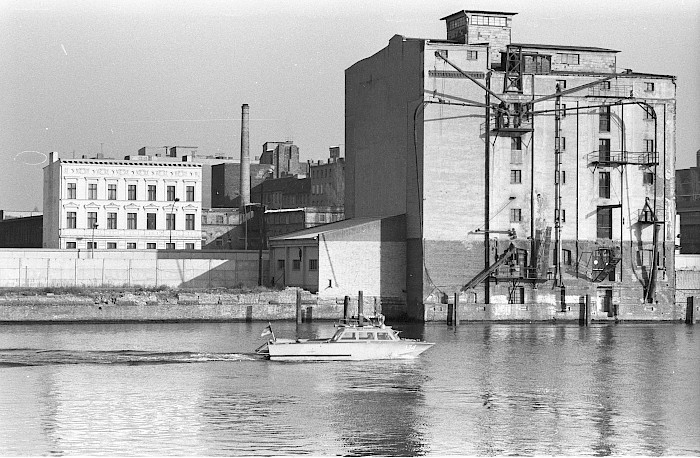
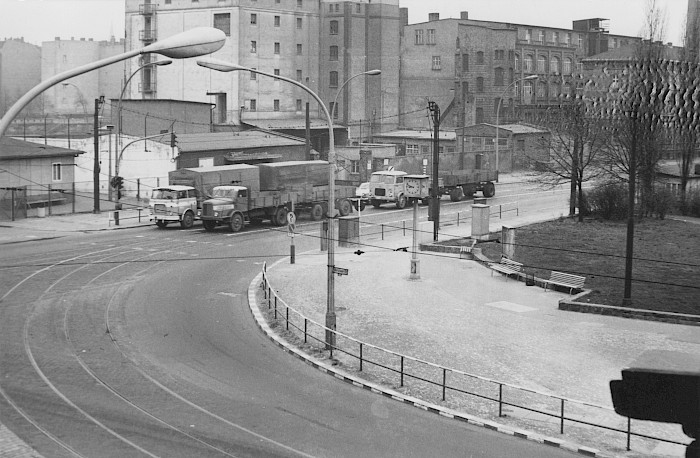
When the Wall was constructed on 13 August 1961, the granary found itself in the middle of the border strip. Workers and delivery trucks were able to access it through a gate on Mühlenstraße. A new solution had to be found, however, when "Border Wall 75" was erected in the mid-1970s, replacing fences, gates and barriers with the 3.6-meter-high Berlin Wall. All the buildings along the Spree on Mühlenstrasse were demolished to provide the GDR border guards with an empty border strip. Only the granary, which was important for grain delivery, was left standing. Henceforth, the granary could only be reached through a metal gate and gatehouse that were built into "Border Wall 75." Everyone who entered or exited the facility had to pass by the gatekeeper, increasing border security. To reach the storage facility, employees had to get written permission from the combine management, which they presented to the gatekeeper.
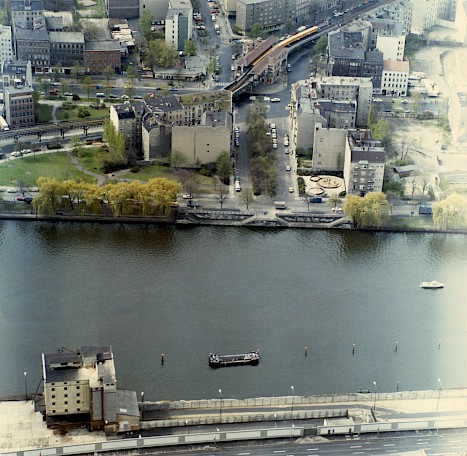


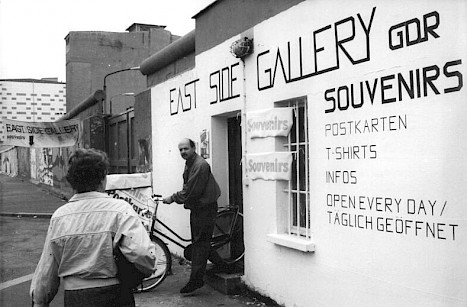
The GDR border guards also used the gatehouse to enter the border strip. To prevent workers and border guards from meeting in the border strip, they used different doors and paths, which were separated by a fence. A second room in the gatehouse was accessible only from the street and had no access to the border strip. It was used as a guardroom by the People's Police, who were responsible for security in the area in front of the border.
Weiterführende Informationen:
